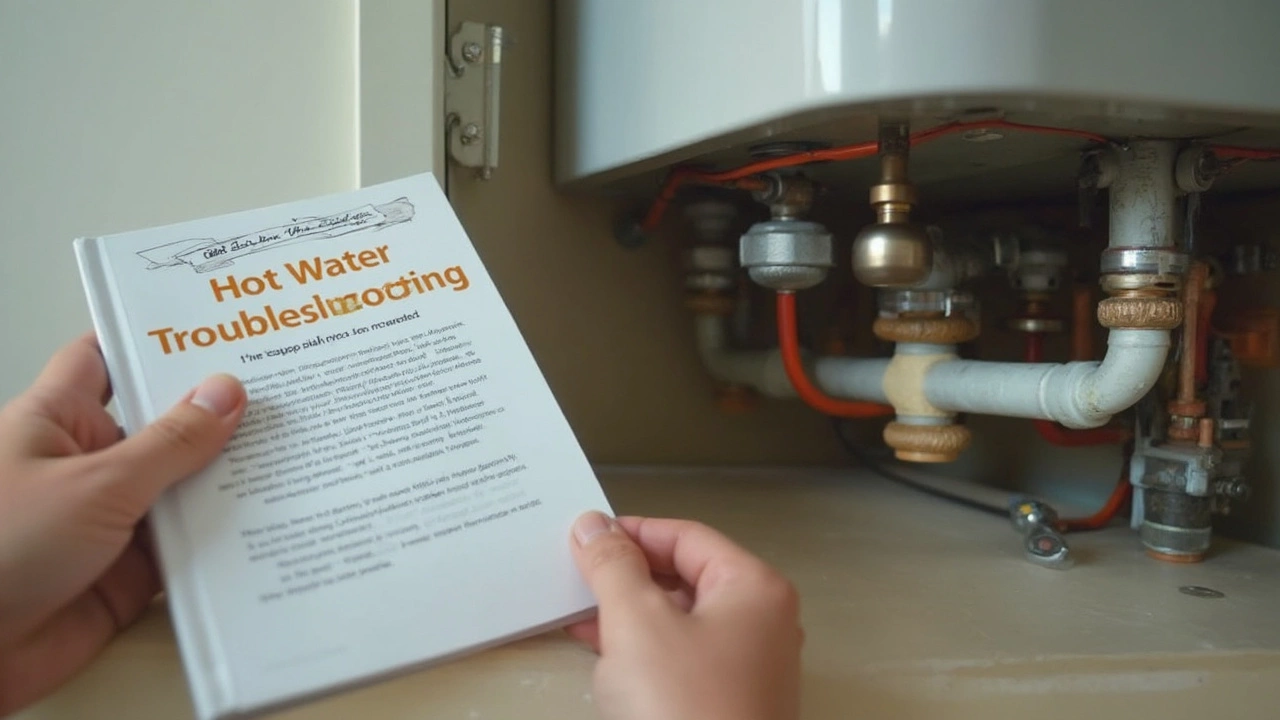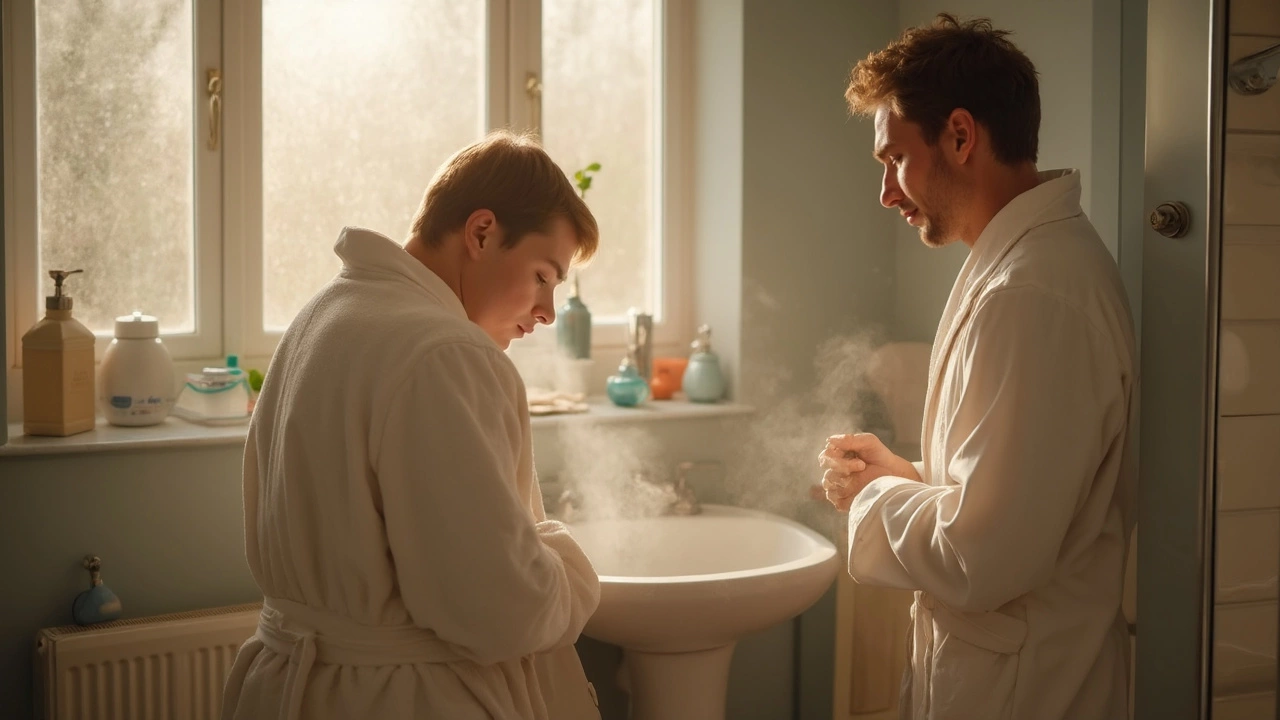Picture this—you’re late for work, fire up the shower, and… nothing but cold water. But your kitchen sink? Piping hot. Annoying, right? This issue crops up a lot, especially in busy households where everyone uses water at random times. It’s tempting to blame the water heater right away, but a lot of times, that’s not actually the problem.
Before you start panicking or resigning yourself to ice-cold showers, there are a few things you can check. Sometimes the fix is way simpler than you’d think. Knowing what to look for could save you money and a lot of hassle. Plus, if you’re like me with kids who suddenly demand a bath at the worst possible moment, you want this fixed yesterday.
Let’s sort out what’s really going on, figure out if you can handle it yourself, and see when it’s time to get a plumber involved. Get ready for clear steps and quick wins—no more freezing in the bathroom while the kitchen gets all the hot water glory.
- Is It Really the Water Heater?
- Shower Valve Mix-Ups
- Easy Fixes You Can Try Yourself
- When to Call the Pros
Is It Really the Water Heater?
When you’re getting hot water at the sink but just cold from the shower, the first thing most people suspect is the water heater. Fair enough—it’s the main player in hot water around the house. But here’s the honest truth: if even one faucet in your home is still running hot, your water heater most likely isn’t the culprit.
A water heater either works or it doesn’t for the whole house. It can’t be picky, giving hot water to the kitchen but holding out on the bathroom. Here’s something interesting: According to the U.S. Department of Energy, most modern residential water heaters are “all-or-nothing” systems. So if the water heater goes out, you’ll lose hot water to every spout, not just one.
"If you still get hot water from one fixture but not another, the problem is almost never the water heater itself—it’s likely the plumbing or the valves at the affected fixture." – Plumbing Manufacturers International
Here’s a quick table you can check out for what a water heater problem usually looks like around the house:
| What You Notice | Possible Cause |
|---|---|
| No hot water anywhere | Broken water heater |
| Hot water at some taps, cold at others | Valve or mixing problem at the cold fixture |
| Water takes forever to get hot | Tank size, long pipe runs, or sediment buildup |
If you walk around the house and every other spot is toasty except for the shower, your water heater’s likely off the hook. Start thinking local plumbing issues—especially if the kids are still splashing in hot bath water but your shower feels like straight glacial runoff.
Shower Valve Mix-Ups
If you’re getting hot water at your sink but not in your shower, the shower mixing valve is a prime suspect. The valve sits behind your shower handle and controls how much hot and cold water blend together before they hit your showerhead. When this part goes bad or gets stuck, it can keep all the hot water from reaching you—even when everything else is working fine.
Mineral build-up is a real problem, especially if you’ve got hard water. Over time, calcium and gunk stick to the inside of the valve, making it hard to turn or blocking the hot water side entirely. Some valves also just wear out: the rubber seals and internal bits become stiff or cracked. Once that happens, the balance between hot and cold gets thrown off.
Another thing to check is the anti-scald device, especially if you’ve moved into a newer house or just had plumbing work done. Many shower valves (like those from Moen or Delta) have these little plastic stoppers that limit how hot the water can get. If someone set it too low—especially if you’ve got little ones in the house—your shower might never get properly warm. Good in theory, but not so great when all you want is a hot rinse.
Here’s how people usually run into problems with shower valves:
- The valve is set wrong—anti-scald adjustment is too low.
- Mineral gunk or debris is clogging up the hot side of the valve.
- The internal cartridge is worn out or broken (super common in older homes).
- After plumbing repairs, small bits of pipe or solder fall into the valve and block the flow.
If you’re handy, you can turn off the water, remove the handle, and check the valve or cartridge yourself. In most homes, it’s a straightforward DIY job, as long as you have the right replacement parts and a little patience. Grab video tutorials online for your specific shower brand for detailed steps. If the valve looks corroded or stuck, that’s usually your culprit.
Don’t forget: after you check or fix the shower valve, always double-check the water at other locations. If hot water really is only missing in the shower, you’ve almost certainly found the problem spot.

Easy Fixes You Can Try Yourself
If your shower isn’t giving hot water but the sink is working fine, don’t grab the phone just yet. You can check a few things yourself—no toolbelt or extra cash needed. Most of the time, the problem has nothing to do with the hot water heater itself but with something right in the bathroom.
Start with the basics:
- Check Other Faucets: Does the bathtub or a laundry sink have hot water? If they do, the water heater is probably working.
- Test the Shower Valve: Sometimes the shower’s mixing valve (the part inside the wall that blends hot and cold) gums up with mineral buildup or gets stuck. Try rotating your handle back and forth a few times to see if it loosens up. If it’s a two-handle setup, double check both are fully open.
- Clean or Replace the Showerhead: Buildup inside the showerhead can mess with water flow and pressure, sometimes blocking hot water more than cold. Unscrew it and soak it in vinegar for 30 minutes. Rinse, screw it back on, and test again.
- Reset Anti-Scald Feature: Newer faucets have an anti-scald device (a small plastic stopper on the valve) that limits how far the handle can go toward ‘hot’. If someone cranked it down too low—maybe to protect kids—it might just need an adjustment. Look up your shower faucet model for simple instructions, or sometimes there’s a video on YouTube.
Here’s what you can expect when you test different areas, to help narrow things down:
| Location | Hot Water? | Possible Cause |
|---|---|---|
| Kitchen Sink | Yes | Shower-side issue |
| Bathroom Sink | Yes | Shower-side issue |
| Bathtub | No | Possible valve issue |
| Shower | No | Valve, showerhead, anti-scald feature |
If all this sounds confusing, don’t stress. The main thing is to isolate the problem. Does hot water make it anywhere in the bathroom? If only the shower is cold, you’re probably looking at a stuck mixing valve or a safety limit that someone set too low.
One more thing—if you’re in an old house and the shower valve has never been replaced, the little rubber parts might have given out, especially with hard water. That’s still a doable DIY but save that for when you’re handy with tools or up for watching a couple repair videos.
When to Call the Pros
There comes a point where you just have to stop guessing and get a real plumber on the case. Sure, trying to fix things yourself is great—until you’re stuck with a shower that’s still freezing and a to-do list a mile long. So, how do you know it’s time to throw in the towel and call a pro?
- If you’ve tried all the basics (checking other faucets, inspecting the shower valve, cleaning out aerators) and it’s still all cold in the shower, it’s probably something deeper in the pipes.
- Spot any leaks, rust-colored water, or banging noises from pipes? Those are red flags—don’t ignore them. It could mean a broken mixing valve or even a failing hot water line.
- If water pressure drops in the shower only, especially after checking for blockages, there’s likely a plumbing issue hidden behind the wall.
- Can’t get both hot and cold in balance any more? Temperature swings could point to a failed cartridge inside the shower valve. Replacing these can be tricky, especially with older homes—trust me, not worth ruining your weekend over.
Professional plumbers use gear the rest of us don’t have. They can do detailed diagnostics like checking the lines with tiny cameras or measuring water pressure at different points. According to HomeAdvisor, the average cost for professional water heater or shower valve repair in the US is between $150 and $500, but catching a problem early could save you from a much more expensive fix later.
| Problem | DIY Friendly? | Call a Pro? |
|---|---|---|
| Clogged shower head | Yes | Only if persistent |
| Mixing valve replacement | No | Yes |
| Hot water in some faucets only | Maybe | Yes, if no simple fix |
| Water heater leaking | No | Yes |
| Mystery temperature swings | No | Yes |
If you ever smell gas (for gas heaters) or see puddles near your water heater, shut everything off and call for help immediately. It’s not worth the risk, and safety comes first. Plumbers see problems like this every week, and the peace of mind you get is well worth the price—especially when the kids are already screaming for their bath and you’re running out of ideas.

